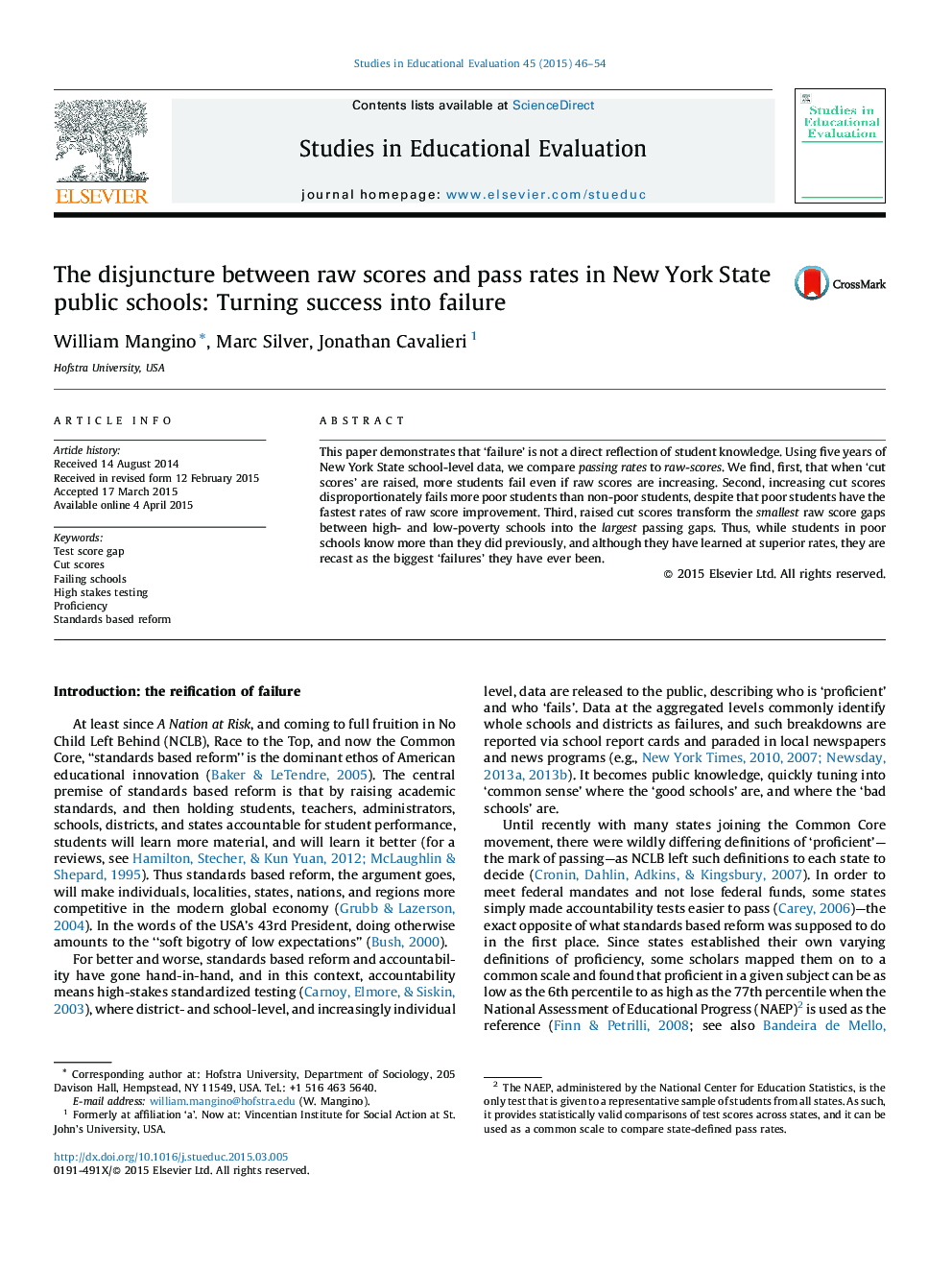| Article ID | Journal | Published Year | Pages | File Type |
|---|---|---|---|---|
| 372613 | Studies in Educational Evaluation | 2015 | 9 Pages |
•We analyze New York State test data before and after higher standards were enacted.•Over 5 years, the gap in raw scores between poor and non-poor schools shrank.•While raw scores improved, higher cut scores disproportionately failed poor students.•The smallest raw score gaps were thus recast as the largest passing gaps.•Proficiency and failure rates are flawed indicators of academic performance.
This paper demonstrates that ‘failure’ is not a direct reflection of student knowledge. Using five years of New York State school-level data, we compare passing rates to raw-scores. We find, first, that when ‘cut scores’ are raised, more students fail even if raw scores are increasing. Second, increasing cut scores disproportionately fails more poor students than non-poor students, despite that poor students have the fastest rates of raw score improvement. Third, raised cut scores transform the smallest raw score gaps between high- and low-poverty schools into the largest passing gaps. Thus, while students in poor schools know more than they did previously, and although they have learned at superior rates, they are recast as the biggest ‘failures’ they have ever been.
